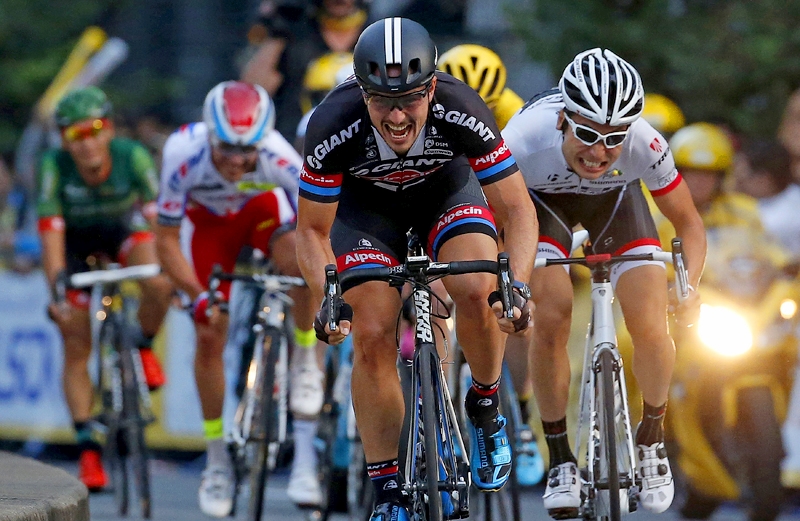You are viewing 1 of your 1 free articles. For unlimited access take a risk-free trial
Explosive strength training: boost your endurance performance

Endurance athletes such as runners, cyclists, swimmers and triathletes need to be specific in their training – ie focus on developing endurance. This probably explains why many athletes are reluctant to undertake strength training. Not only is there a commonly-held belief that it won’t enhance endurance performance, there’s often an irrational fear that strength training will result in bulky muscles, adding body weight and diminishing performance.
However, when all’s said and done, an athlete who has good strength and endurance will always perform better than one who has good endurance but poor strength. Moreover, an increasing amount of research suggests that regular strength training can help improve key elements of endurance – particularly, how efficiently the working muscles use oxygen and the ability to sustain a fast pace with minimal build up of fatiguing muscle lactate. Now a study on cyclists has looked at the potential benefits of explosive strength training for endurance performance.
The research
In the study, researchers investigated the effect of a 20-week strength training programme in fifteen elite cyclists. In particular, they wanted to see whether it improved cycling economy – ie how efficiently the cyclists’ muscles were able to use oxygen to produce energy to spin the cranks (all other things being equal, a greater cycling efficiency allows cyclists to ride faster for less effort and energy expenditure). Other aspects associated with endurance were also assessed, such as maximum power at very high intensity (100% VO2max) and body composition. Unlike many other strength training studies however, the cyclists in this study performed ‘explosive’ strength training; instead of a steady, slow controlled movement, an explosive strength training movement involves accelerating the weight as rapidly as possible (while still retaining control of the movement).At the start of the 20-week training period, the cyclists were divided into two groups:
- A strength group – the cyclists performed their normal cycling training but added in explosive strength training – a mixture of lower body exercises and ‘on-bike’ explosive training, such as maximal sprints at high resistance.
- A control group – the cyclists carried on cycling training but didn’t perform any strength training.
The findings
The results showed that compared to the endurance-only group, the cyclists who explosive strength-trained (as well as maintaining their endurance training) experienced significant gains in their maximum power at 100% VO2max and they also demonstrated higher levels bike-specific strength. In addition, they gained lean muscle tissue. However, unlike in a number of studies on conventional strength training, these cyclists didn’t experience gains in cycling economy. 1. Scand J Med Sci Sports. 2014 Aug;24(4):603-12PP VERDICT
Previous studies on explosive strength training in endurance athletes are rather mixed. It can certainly boost strength, power and sprint performance. In runners, there is also some evidence that it can enhance endurance performance by increasing muscle efficiency. However, for cyclists looking to boost endurance, the jury is still out on explosive strength training. And given that a number of studies have shown that conventional heavy lowerbody strength training DOES improve cycling economy and endurance, this is what we recommend cyclists continue to do for the time being.PRACTICAL SUGGESTIONS
- When adding strength training to your cycling programme, ALWAYS reduce your overall cycling volume to allow for recovery and reduce the risk of overtraining. A good time to do this is the off season, when shorter days and inclement weather conditions will mean you’re probably cycling less anyway.
- Structure your strength sessions to target the key cycling muscles - not just a random bunch of exercise performed at the gym. A good starting point is to perform lower-body exercises that work the cycling muscles such as squats, lunges, leg presses and calf raises. If in doubt, consult a coach or qualified fitness trainer.
- Strength sessions should be short, low-volume and high-intensity in nature (eg 2-3 sets of 6-8 reps per exercise). Studies show this approach is more effective than low-intensity, high reps.
- For most cyclists, just one high-quality strength session per week is adequate – even in the off season.
Newsletter Sign Up
Testimonials
Dr. Alexandra Fandetti-Robin, Back & Body Chiropractic
Elspeth Cowell MSCh DpodM SRCh HCPC reg
William Hunter, Nuffield Health
Further reading
Newsletter Sign Up
Coaches Testimonials
Dr. Alexandra Fandetti-Robin, Back & Body Chiropractic
Elspeth Cowell MSCh DpodM SRCh HCPC reg
William Hunter, Nuffield Health
Keep up with latest sports science research and apply it to maximize performance
Today you have the chance to join a group of athletes, and sports coaches/trainers who all have something special in common...
They use the latest research to improve performance for themselves and their clients - both athletes and sports teams - with help from global specialists in the fields of sports science, sports medicine and sports psychology.
They do this by reading Sports Performance Bulletin, an easy-to-digest but serious-minded journal dedicated to high performance sports. SPB offers a wealth of information and insight into the latest research, in an easily-accessible and understood format, along with a wealth of practical recommendations.
*includes 3 coaching manuals
Get Inspired
All the latest techniques and approaches
Sports Performance Bulletin helps dedicated endurance athletes improve their performance. Sense-checking the latest sports science research, and sourcing evidence and case studies to support findings, Sports Performance Bulletin turns proven insights into easily digestible practical advice. Supporting athletes, coaches and professionals who wish to ensure their guidance and programmes are kept right up to date and based on credible science.










